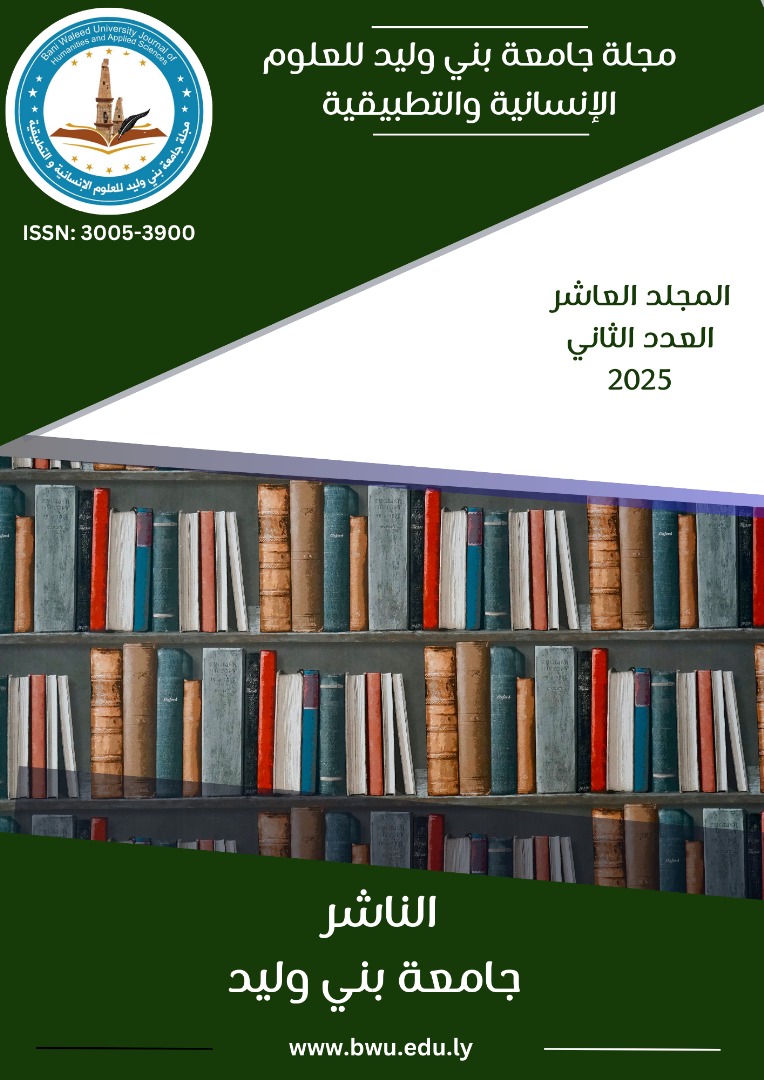Contamination of chicken carcasses displayed in the markets of the city of Al-Bayda –Libya
DOI:
https://doi.org/10.58916/jhas.v10i2.739Keywords:
Al-Bayda city, E. coli, Salmonella, Chicken carcasses, Libya .Abstract
The study was conducted to detect the degree of bacterial contamination in chicken carcasses displayed in the markets of Al-Bayda city by estimating some evidence of bacterial contamination. All laboratory tests were carried out in the Department of Animal Production - Faculty of Agriculture - Omar Al-Mukhtar University during January 2024. 27 samples were collected from chicken meat markets from three different areas within Al-Bayda city, designated as areas A, B, C, at three different times after the time of slaughter. Three types of bacteria were estimated as an indicator of contamination, namely E. coli, Salmonella and total count. The results obtained were compared with the international standard specifications for chicken carcasses. The results showed that all samples were contaminated with pathogenic bacteria (E. coli and Salmonella). The number of E. coli colonies in the samples immediately after slaughter in area B was 4.03×104 CFU/g, in area A 1.917×104 CFU/g and in area C 3.73×104 CFU/g. The location of the sample had no significant effect immediately after slaughter. After 12 hours of slaughter and display in the markets, the number of E. coli colonies in area B was 17.68×104 CFU/g, in area A 2.35×104 CFU/g and in area C 11.98×104 CFU/g (P<0.005). The number of Salmonella colonies immediately after slaughter in area C was 8.45 CFU/g, in area B 4.433 CFU/g and in area A 5.933 CFU/g (P<0.005). This indicates a high level of contamination in chicken carcasses displayed in the markets. This is due to the failure of slaughterhouses and shops to adhere to public health and hygiene standards. Therefore, there is a need to educate consumers about the danger of pathogenic bacteria present on chicken carcasses. The regulatory authorities should also tighten control over slaughterhouses and chicken shops in Al Bayda city.
Downloads
References
References:
Bibliography in Arabic:
Bakkar Ali Haj Saeed, Adel Muhammad Milad Ashlak, Abdullah Muhammad Abdullah Mansour (2019). Estimation of the microbial content of local and imported chicken meat in the markets of Benghazi, Libya. Al-Mukhtar Journal of Science 34(3), 2186-2617, 2022.
Guide to Microbiological Specifications and Standards for Food, Ministry of Municipal Affairs, Riyadh, 2014.
References in English:
Arun, K. Das.; S, Biswas. 2003 Effect of Processing Methods on Microbiological Qualityof Chicken J. Vet. Publ. Hlth., 1 (2) : 147-152.
Beril,S.; Adem, O.; Osman, I. I. 2024 Antimicrobial efficacy of postbiotics of ctic acid bacteriaand their effects on food safety and shelf life of chicken meat Ann. Anim. Sci.,Vol.24,No.12024277–287.
Chea, R.; Hung, N.V.; Sothyra, T.; Fred, U.; Sofia, B.; Sinh, D.; Sok, K.; Delia, G.; Kristina, O.; Theng, H.; Seng, S.; Phirum; Roeurn, S.; Johanna, F. 2021 Prevalence of Salmonella spp. and Staphylococcus aureus in Chicken Meat and Pork from Cambodian Markets pathogens 2021,10(5),556
EFSA.2018. The European Union summary report on trends and sources of zoonoses, zoonotic agents and food-borne outbreaks in 2017. EFSA J 16.
FATIMA, S. A.; JASSIM, M. A.; NADHIM, S. A 2023 INCIDENCE RATE OF SOME FOOD BORNE PATHOGENS BACTERIA FROM RED MEAT AND CHICKEN MEAT IN DUHOK PREVALENCE. Journal of University of Duhok., Vol. 22,No.1(Agri.andVet.Sciences),Pp201-202,2023.
Harsh, K.; Kanchan, B.; Talwinder, K.; Eugenie, N.; Kamil, K.; Vinod, K.; Shashi, K.; Daljeet, S.D.; Chirag, C.; Reena, S.; Shivani, G.; Tek, C. B.; Rachna, V.; Dinesh, K.; 2020 Detection of Bacterial Pathogens and Antibiotic Residues in Chicken Meat: A Review.Foods2020,9,1504;doi:10.3390/foods9101504.
Hidemasa, K.; Shingo, M.; Hajime, T.; Teramura, N.; 2005 Comparison of the Compact Dry IC method with the Standard Pour Plate Method (AOAC Official Method 966.23) for determining aerobic colony counts in food samples: November 2005Journal of,AOAC,International88(6):1702-13
Hudson, T.; Thames, O.; Courtney, A.; Fancher.; Mary, G.; Colvin,O.R.; Mika, M.; Anally, L. i.; Zhang.; Aaron, S.; Kiess, T. T. N.; Anuraj, T. 2022 Spoilage Bacteria Counts on Broiler Meat at Different Stages of Commercial Poultry Processing Plants That,Use,Peracetic,Acid,Journal,MDPI1439(11).
Hyemin,Oh.;Yoon,JangW;Yoon,Se-Wook.;Soomin,Lee and Heeyoung 2023 Salmonella Risk Assessment in Poultry Meat from Farm to Consumer in Korea Foods 2023, 12, 649.
Kunnanut, K., Duangporn, P.; Tongkorn, M.I.; Thanida, H.; Patpong, L.; Veerasak, P. 2022 Bacterial contamination of chicken meat in slaughterhouses and the associated risk factors: A nationwide study in Thailand.PLoS ONE 17(6) e0269416.
M, Marmion. a. b.; M,T.; Ferone, a. b. P.; Whyte, c.; A,G.M. Scannell. 2021 The changing microbiome of poultry meat; from farm to fridge: journal Food Microbiology99(2021) 103823.
Polkinghorne, R.J.; Thompson, J.M. 2010.Meat standards and grading. A world view.Meat.Science 86: 227- 235.
Yuyuan Feng, Sudipta Talukder, Bakytzhan Bolkenov, Toni Duarte, Xiang Yang 2025 Comparative Effectiveness of Cloth Sampling to Rinse Sampling on Microbial Recovery and Salmonella Detection in Poultry Meats Journal of Food Protection 88 (2025)100425.
Youssef Salama 2024 Understanding Microbial Contamination in Meat and Poultry Production Journal of Research in agriculture and food sciences 2024; 1(3): 87-107.









